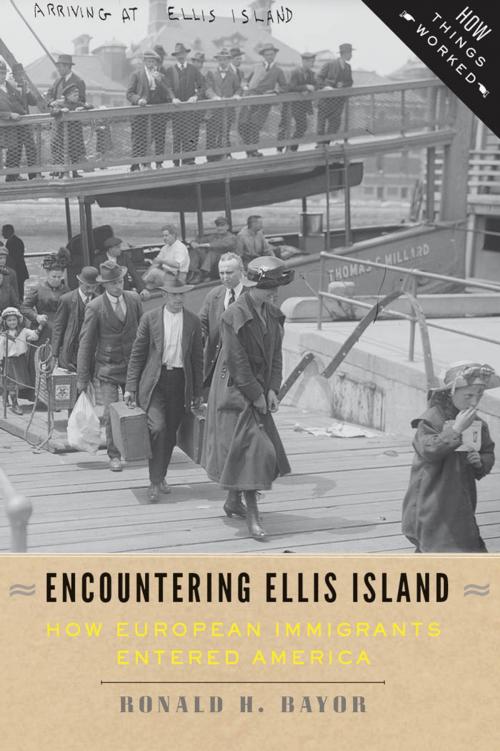Encountering Ellis Island
How European Immigrants Entered America
Nonfiction, Social & Cultural Studies, Social Science, Cultural Studies, Emigration & Immigration, History, Americas, United States| Author: | Ronald H. Bayor | ISBN: | 9781421413693 |
| Publisher: | Johns Hopkins University Press | Publication: | May 15, 2014 |
| Imprint: | Language: | English |
| Author: | Ronald H. Bayor |
| ISBN: | 9781421413693 |
| Publisher: | Johns Hopkins University Press |
| Publication: | May 15, 2014 |
| Imprint: | |
| Language: | English |
America is famously known as a nation of immigrants. Millions of Europeans journeyed to the United States in the peak years of 1892–1924, and Ellis Island, New York, is where the great majority landed. Ellis Island opened in 1892 with the goal of placing immigration under the control of the federal government and systematizing the entry process. Encountering Ellis Island introduces readers to the ways in which the principal nineteenth- and early twentieth-century American portal for Europeans worked in practice, with some comparison to Angel Island, the main entry point for Asian immigrants.
What happened along the journey? How did the processing of so many people work? What were the reactions of the newly arrived to the process (and threats) of inspection, delays, hospitalization, detention, and deportation? How did immigration officials attempt to protect the country from diseased or "unfit" newcomers, and how did these definitions take shape and change? What happened to people who failed screening? And how, at the journey's end, did immigrants respond to admission to their new homeland?
Ronald H. Bayor, a senior scholar in immigrant and urban studies, gives voice to both immigrants and Island workers to offer perspectives on the human experience and institutional imperatives associated with the arrival experience. Drawing on firsthand accounts from, and interviews with, immigrants, doctors, inspectors, aid workers, and interpreters, Bayor paints a vivid and sometimes troubling portrait of the immigration process.
In reality, Ellis Island had many liabilities as well as assets. Corruption was rife. Immigrants with medical issues occasionally faced a hostile staff. Some families, on the other hand, reunited in great joy and found relief at their journey's end.
Encountering Ellis Island lays bare the profound and sometimes-victorious story of people chasing the American Dream: leaving everything behind, facing a new language and a new culture, and starting a new American life.
America is famously known as a nation of immigrants. Millions of Europeans journeyed to the United States in the peak years of 1892–1924, and Ellis Island, New York, is where the great majority landed. Ellis Island opened in 1892 with the goal of placing immigration under the control of the federal government and systematizing the entry process. Encountering Ellis Island introduces readers to the ways in which the principal nineteenth- and early twentieth-century American portal for Europeans worked in practice, with some comparison to Angel Island, the main entry point for Asian immigrants.
What happened along the journey? How did the processing of so many people work? What were the reactions of the newly arrived to the process (and threats) of inspection, delays, hospitalization, detention, and deportation? How did immigration officials attempt to protect the country from diseased or "unfit" newcomers, and how did these definitions take shape and change? What happened to people who failed screening? And how, at the journey's end, did immigrants respond to admission to their new homeland?
Ronald H. Bayor, a senior scholar in immigrant and urban studies, gives voice to both immigrants and Island workers to offer perspectives on the human experience and institutional imperatives associated with the arrival experience. Drawing on firsthand accounts from, and interviews with, immigrants, doctors, inspectors, aid workers, and interpreters, Bayor paints a vivid and sometimes troubling portrait of the immigration process.
In reality, Ellis Island had many liabilities as well as assets. Corruption was rife. Immigrants with medical issues occasionally faced a hostile staff. Some families, on the other hand, reunited in great joy and found relief at their journey's end.
Encountering Ellis Island lays bare the profound and sometimes-victorious story of people chasing the American Dream: leaving everything behind, facing a new language and a new culture, and starting a new American life.















